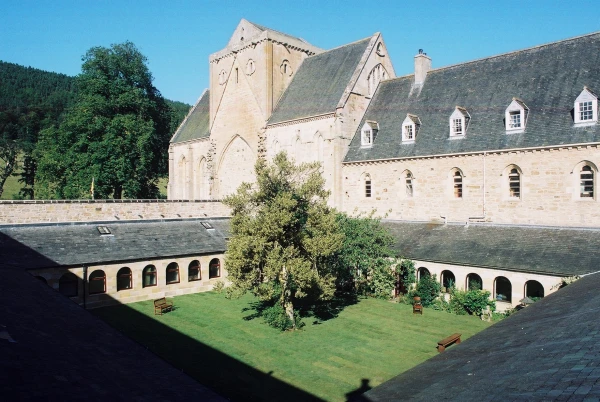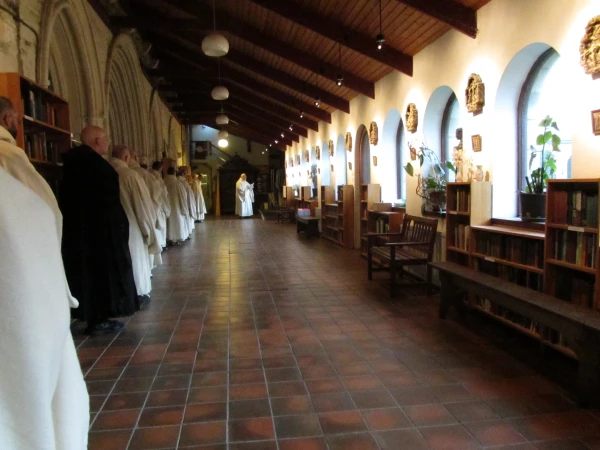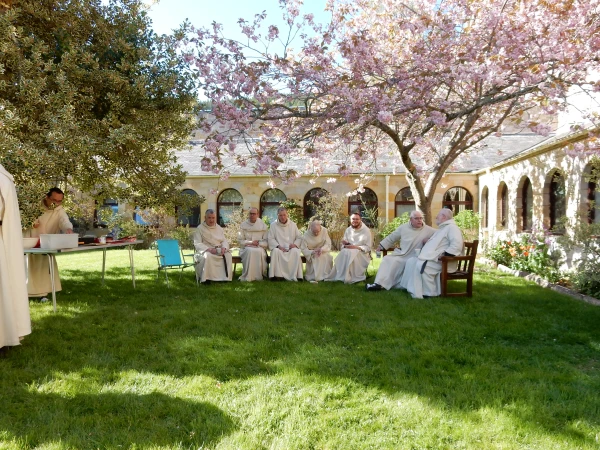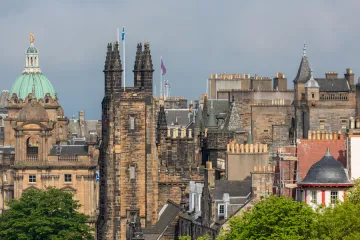Edinburgh, Scotland, Oct 14, 2024 / 06:00 am
In northeast Scotland, six miles southwest of Elgin in Moray, stands Pluscarden Abbey, the northernmost Benedictine abbey in the world. Within its medieval walls, a community of some 15 Catholic monks continue to pray and welcome pilgrims for an encounter with God in the peace of the glen.
Pluscarden is the only medieval British monastery still being used for its original purpose, according to its website. And with good reason: The origin of this holy place dates back to 1230, when monks from Burgundy, France, arrived at the invitation of King Alexander II of Scotland. They were from a branch of Cistercians, present mostly in Francophone Europe, the monastery’s prior, Father Giles Conacher, told CNA.

The monastery has endured many of history’s tribulations: destructive fire from enemies and consequences of wars that tore apart England, France, and Scotland. More than two centuries after its foundation, in 1454, the monks joined the Benedictine order.
In 1560, the monastery suffered another setback. Becoming a Protestant country, the Scottish Parliament repudiated the pope’s authority, and the Catholic Mass was declared illegal.
“It was a difficult time, but monasteries were not suppressed in Scotland as in England; there was continuity,” Conacher explained. “We don’t know exactly where the monks went; we just know that one was found here 40 years later.”
Monastic life was extinguished for a time. Toward the end of the 19th century, John Patrick Crichton-Stuart, third marquess of Bute, one of the richest men in Europe, became a fervent protector of the Catholic Church. Undertaking a vast project of monument restoration, he bought Pluscarden monastery. “He didn’t restore it, but he certainly conserved it,” Conacher said.
The place passed to his nephew, and finally, in 1948, five monks came to inhabit the monastery. Their origins were unusual: Founded on the Isle of Dogs in London in 1896 by an Anglican medical student, the community of monks has some practices that were not part of the Church of England: their view of the Blessed Sacrament and their belief in the Immaculate Conception and the Assumption “were central in their life,” Conacher explained. Therefore, they decided to become Catholic in 1913.

The abbey today
The monastery of Pluscarden became independent in 1966, and in 1974, 50 years ago, it became an abbey — with legal autonomy. Today, Pluscarden has a community of 15 Benedictine monks, some of whom hail from Nigeria, Australia, East Africa, Poland, England, and New Zealand. The abbey still receives vocational applications.
Of the monks, Conacher, who was born in England and then moved to Edinburgh as a child, has been there the longest — 52 years. He arrived at the abbey at the age of 23.
“I came to Pluscarden on a wet afternoon, on the 27th of September 1971, with the rain dripping on trees, and somehow, this rang a bell, this had to be God,” he recalled. “When I came back, and told my family of my desire to join, my uncle exclaimed: ‘That’s the first bloody sensible thing you’ve done in your whole life’… And he was right!”
During his monastic life, Conacher was sent to Africa and Australia, for their missions.
Pluscarden is in fact a member of the Subiaco Cassinese Congregation, an international union of Benedictine houses that includes Subiaco, Monte Cassino, St. Paul Outside the Walls, and various monasteries in Italy, France, Germany, Africa, Central and South America, as well as India, Cambodia, Vietnam, and Thailand.
A place to meet God
(Story continues below)
At Pluscarden, the day begins early. The first prayer service is at 4:30 a.m. and the last one at 7:30 p.m. Besides maintenance, gardening, and intellectual work like translating, craftwork, and woodwork, the monks dedicate themselves to hospitality. Visitors are received in the two guest houses for men and women.

The beauty of the site certainly attracts people, but it is above all the spiritual thirst people come with that the monks notice.
“Some people from Cambridge were here recently, and they told us they thought monasteries existed only in books and museums. And here it was, alive and active, and that was astonishing to them. That’s true for a lot of people,” Conacher said.
“Some of them come without any particular belief, and they leave with tears because of the beauty of the liturgy; or they sit in silence for half an hour in the chapel, and they go away comforted. We don’t need to know how it works. We just know that God’s here,” he added.
In this medieval place where the walls are soaked in prayer, individuals, families, and groups can come freely. “There are no questionnaires, no members cards; the door is open,” Conacher said.
To reach more people, the monks have made the Masses and the Divine Offices, sung in Gregorian Chant, accessible on streaming on their website. From this platform, one can also light a candle to pray for a particular intention.






